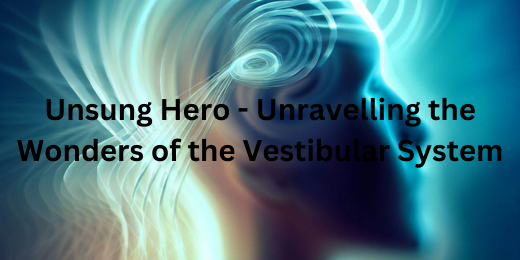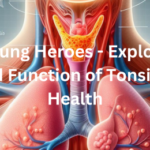Understanding the vestibular system
The vestibular system, with its profound importance, can be defined as a sensory system responsible for maintaining balance and spatial orientation in the human body. It comprises a network of structures located in the inner ear. Understanding the vestibular system is crucial as it plays a vital role in our everyday activities, enabling us to stand, walk, and maintain equilibrium.
By detecting motion, acceleration, and changes in head position, the vestibular system provides continuous feedback to the brain, allowing it to coordinate motor responses and adjust body posture accordingly. This intricate mechanism allows us to navigate our surroundings with precision and stability. Thus, understanding the vestibular system is essential for comprehending the fundamental aspects of human balance and spatial awareness. The circulatory system is also very important as it maintains overall body function by delivering essential elements to organs and tissues.
Anatomy of the Vestibular System
Understanding the vestibular system entails delving into its intricate components and the inner ear structures it encompasses. The vestibular system comprises several key components that work in harmony to maintain our sense of balance and spatial orientation. These components include the semicircular canals, which detect rotational movements of the head, the otolith organs (utricle and saccule), responsible for sensing linear acceleration and head position relative to gravity, and the vestibular nerve, which transmits sensory information from the inner ear to the brain.
The inner ear structures involved in this system consist of the cochlea, responsible for hearing, and the vestibule, which houses the utricle and saccule, vital for balance and detecting head movements. Understanding the vestibular system necessitates exploring these interrelated components and their functions, shedding light on the remarkable mechanisms that contribute to our ability to maintain balance and navigate the world around us.
Functioning of the Vestibular System
Understanding the vestibular system involves grasping the intricate mechanisms that underlie balance and equilibrium, as well as comprehending how this remarkable system detects and processes sensory information. The vestibular system functions through a complex interplay of sensory inputs and neural processing.
It relies on sensory receptors located in the inner ear, such as the hair cells within the semicircular canals and otolith organs, which are responsible for detecting various types of head movements and changes in head position. These sensory signals are then transmitted to the brain via the vestibular nerve, where they are processed and integrated with visual and proprioceptive cues to form a comprehensive perception of balance and spatial orientation.
Understanding the vestibular system entails appreciating the intricate neural pathways and computations involved in accurately perceiving and maintaining equilibrium, providing us with a profound insight into the remarkable physiological processes that contribute to our body’s sense of balance. Similarly, the human nervous system functions as the body’s communication network, transmitting signals and coordinating various processes, such as movement, sensation, and vital functions.
Disorders and Impairments
Understanding the vestibular system is crucial for comprehending the common disorders that can affect its functioning, along with the associated symptoms, causes, and impact on daily life. Several disorders can disrupt the vestibular system, leading to debilitating consequences. One such disorder is vestibular migraine, which manifests as recurrent episodes of vertigo, often accompanied by headaches.
Benign Paroxysmal Positional Vertigo (BPPV) is another common vestibular disorder characterized by brief episodes of vertigo triggered by specific head movements. Meniere’s disease, marked by recurrent vertigo, hearing loss, tinnitus, and a feeling of fullness in the ear, is yet another condition impacting the vestibular system.
These disorders can significantly impact a person’s quality of life, causing dizziness, unsteadiness, anxiety, and difficulty performing daily activities. Understanding the vestibular system and its associated disorders is vital for recognizing the symptoms, seeking appropriate diagnosis and treatment, and providing necessary support to individuals navigating the challenges posed by these conditions.
Diagnosis and Treatment
Understanding the vestibular system involves familiarizing oneself with the methods used to diagnose disorders affecting its function and gaining an overview of the available treatment options. Diagnosing vestibular system disorders often requires a comprehensive evaluation that may include a detailed medical history, physical examination, and specialized tests such as videonystagmography (VNG), electronystagmography (ENG), or vestibular evoked myogenic potentials (VEMP).
Once a diagnosis is made, various treatment approaches can be employed to address the specific condition. Medication, such as anti-vertigo drugs or anti-nausea medications, may be prescribed to alleviate symptoms. Additionally, vestibular rehabilitation therapy, consisting of specific exercises and manoeuvres, can help improve balance and reduce dizziness.
In more severe cases, surgical interventions or minimally invasive procedures may be considered. Each treatment plan is tailored to the individual’s needs and the underlying vestibular disorder, with the goal of managing symptoms, improving function, and enhancing the overall quality of life.
Maintaining a Healthy Vestibular System
Understanding the vestibular system is crucial for promoting its health and preventing vestibular disorders. To maintain a healthy vestibular system, incorporating tips and exercises is beneficial. Engaging in regular physical activity like walking or practicing yoga helps improve balance and coordination. Activities that challenge balance, such as standing on one leg or using balance boards, strengthen the vestibular system.
Managing stress, getting enough sleep, and maintaining a healthy diet also contribute to overall well-being. Preventive measures include protecting the ears from excessive noise, avoiding head injuries, and maintaining good posture. By implementing these lifestyle changes and preventive measures, individuals can support the health of their vestibular system, promoting optimal balance and reducing the risk of vestibular disorders.



